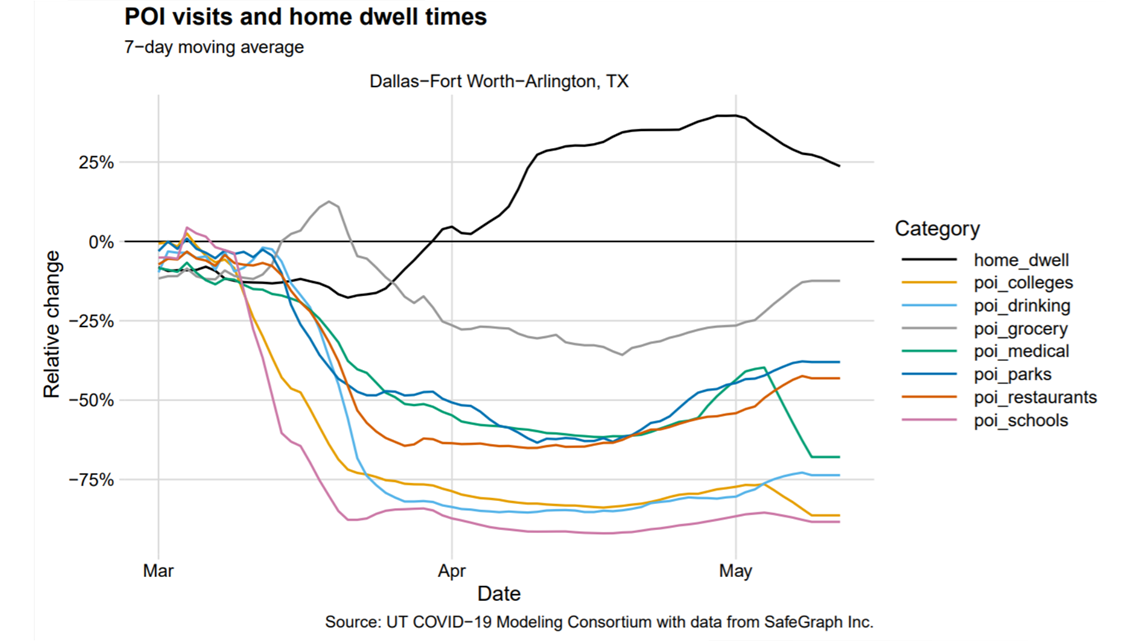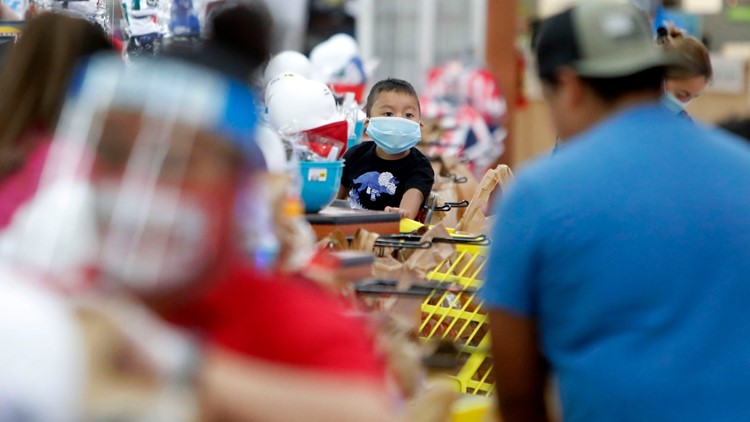As businesses, restaurants and salons have reopened, more Texans have ventured out, according to data collected by researchers at the University of Texas at Austin.
That includes the Dallas-Fort Worth-Arlington metropolitan area.
Since the end of April, people in the region have started to visit parks, restaurants and grocery stores at an increasing rate, said researcher Lauren Ancel Meyers. Those visits had bottomed-out by the middle of the month.
Meyers is a renowned professor of integrative biology and statistics & data sciences at The University of Texas at Austin. She is considered one of the foremost experts on epidemics and works with health agencies to track and mitigate viruses like COVID-19.
The professor is currently leading a team working on projections and models centered on when certain areas across the country will reach a peak in deaths from the disease.
The team has been gathering aggregate data from cell phones that look at the frequency of peoples' visits to places such as restaurants, grocery stores, bars, parks and schools to help make those projections.
Meyers said she's concerned by what she's seen in response to the disease.
Other Texas cities have followed a similar trend as Dallas-Fort Worth, with people becoming more relaxed with social distancing recommendations and visiting public spaces more frequently.


But the data only shows people's movements, not how they're acting while out and about.
The way they act is an important piece of the equation, Meyers said. If people aren't taking good care of themselves and those around them by following health guidelines, such as wearing a mask, maintaining 6 feet of distance from others and frequently washing their hands, there could be a spike in infections and, consequently, the death rate.
Any marked changes in the way people behave, though, won't be visible in terms of hospitalizations and deaths until several weeks after that behavior has actually changed, Meyers said, because the disease has about a 24-day lag between when someone is infected and when they're at risk of dying.
So the team's projections are somewhat limited in scope.
Still, though, their models predict the D-FW area is likely to see death counts continue to rise from the disease for at least the next few weeks.
Projections from their research show hundreds more people could die in the metropolitan area before the end of May.
"We have not beaten this virus," Meyers said.
So how should people approach reopening?
The advice Meyers would give to a friend is pretty simple: take all the precautions you can. If you get COVID-19, it's a serious virus that can put you in the hospital, or worse, she said. And even if you don't get sick, you could be responsible for hospitalizing someone else if you don't take the proper precautions.



